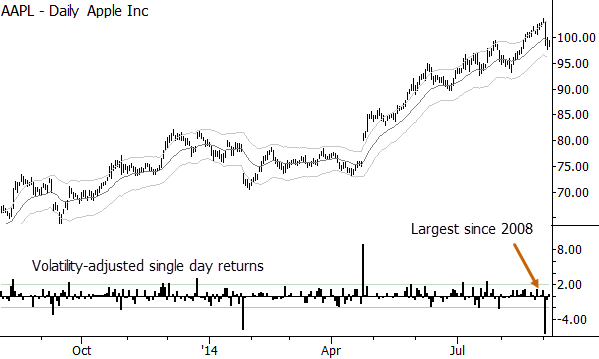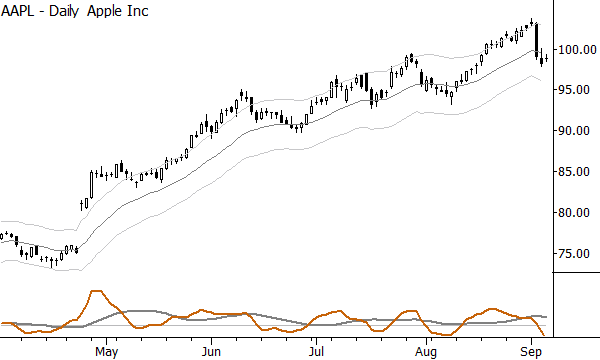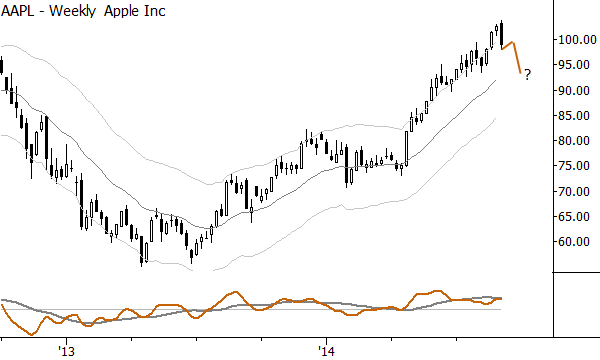Bobbing for Apple?
Since my other post today led you down a long trail of something that did not work, let me leave you this weekend with a pattern to watch over the next several weeks. Let's consider a potentially bearish pattern in Apple (Nasdaq: AAPL), and how that might play into a higher timeframe uptrend.
"Hey, that's different"
Market analysis does not have to be rocket science. In fact, one of the critical skills is simply noticing when a pattern is broken, or when something is different. Apple had a large selloff this week. How large? On a volatility-adjusted basis, the largest single day selloff since 2008. So, that's different.

Patterns and context
The context, of course, is that AAPL has been a strong, market-leading stock for quite some time. Yes, we can discuss fundamental and strategic factors, but the price action has spoken clearly: every weakness in the market has led to only moderate weakness in AAPL. This is a stock that has rolled over every potential setback. Now, I've written recently about the dangers of always trying to fade a trend. The crowd is not always wrong. In fact, much of the game of trading is about figuring out when it makes sense to join the crowd, but trying to get off the train just before the end of the line. Respect the potential for an intact trend to go further than anyone thinks possible. However, there is potential on the short side too: in this context of a market-leader, we now have new downside volatility. This points to some potential imbalance. Furthermore, stocks tend to recover after sharp downward spikes rather quickly, which AAPL, so far, has not done. This points, again, to something being different.

Now, we have a very simple pattern setup. A sell Anti is essentially the first consolidation after new downward momentum. ((If we want the help of an indicator, the MACD confirms new momentum.)) Now, we need an entry trigger. In this case, I would look to short the first breakdown out of the consolidation area. Ideally, we'd like to see perhaps 2-3 additional days of small ranges near the low of this week's downthrust, but patterns do not play out perfectly. The concept here is more important than waiting for a pretty pattern, and the concept is a consolidation (i.e., an inability to bounce) near the low of a strong downthrust. This pattern sets up at least one more potential leg down.
Expectations

Do not assume that a successful trade entry will lead to a major downdraft. Shorting an uptrending stock has good potential reward if the pattern is clearly defined (as it could be here, with proper consolidation), but trade management is essential. One of the things I discuss at great length in my free trading course is that countertrend trades require a significantly different set of skills to manage them effectively. Simply put, you have to be prepared to take profits more aggressively, tighten stops proactively, and expect that the trend may reassert itself at any moment. It is also possible that a short here could exhaust into a complex pullback in the low 90's, targeting an ideal entry for another long swing.
Simple patterns: let the market take the first step, wait for the consolidation, and attempt to trade on the second thrust in the same direction. This is a simple formula that works, with some adaptation, in all markets and all timeframes.



